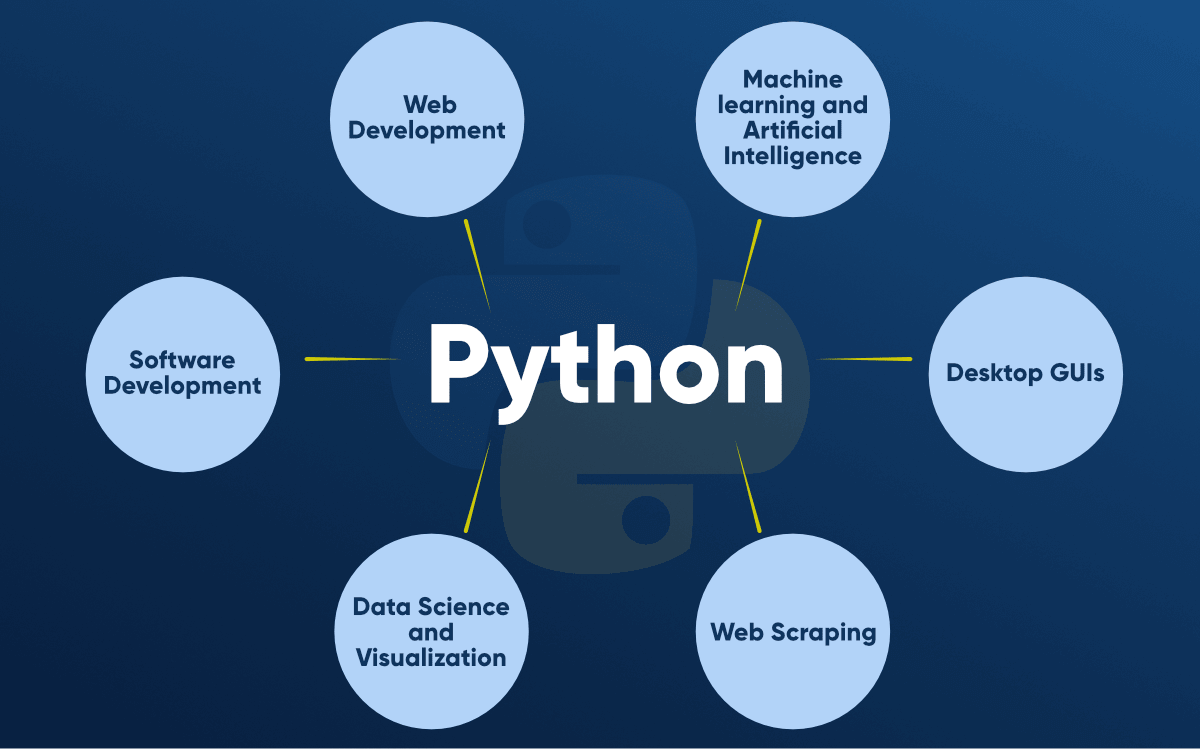
Python Training: Creating Machine Learning Models
Introduction:
Machine learning has become a transformative force in the rapidly changing field of technology, revolutionizing industries worldwide. Python, with its simplicity, versatility, and a vast ecosystem of libraries, has become the go-to programming language for machine learning enthusiasts and professionals alike. This article will guide you through the essential steps of Python training for creating robust machine learning models, empowering you to harness the potential of this cutting-edge field.
I. Understanding the Basics of Python:
Before diving into machine learning, it’s crucial to have a solid grasp of Python’s fundamentals. Learn about loops, conditional statements, variables, and data types. Familiarize yourself with variables, data types, loops, and conditional statements. Explore functions, modules, and libraries, as they will play a pivotal role in building and implementing machine learning models.
II. Python Libraries for Machine Learning:
Python boasts an extensive collection of libraries dedicated to machine learning. The most prominent among them include:
NumPy: A fundamental library for numerical operations, providing support for large, multi-dimensional arrays and matrices.
Pandas: Ideal for data manipulation and analysis, Pandas facilitates working with structured data through its DataFrame data structure.
Matplotlib and Seaborn: These libraries aid in data visualization, helping you understand patterns and trends in your dataset.
Scikit-Learn: A comprehensive machine learning library that includes tools for classification, regression, clustering, and more. It offers different algorithms and a unified interface.
TensorFlow and PyTorch: These deep learning libraries enable the implementation of neural networks, opening the door to complex machine learning models.
III. Data Preprocessing:
Preparing your data is a crucial step in building effective machine learning models. Python offers several tools and techniques for data preprocessing, including:
Handling Missing Data: Use Pandas to identify and handle missing data, employing methods like interpolation or imputation.
Encoding Categorical Data: Convert categorical variables into numerical representations using techniques like one-hot encoding or label encoding.
Feature Scaling: Normalize or standardize numerical features to ensure that they contribute equally to the model.
IV. Exploratory Data Analysis (EDA):
EDA involves analyzing and visualizing data to uncover patterns, relationships, and anomalies. Python’s data visualization libraries, Matplotlib and Seaborn, play a crucial role in creating informative plots and charts. By exploring your dataset visually, you gain insights that guide the selection of appropriate machine learning algorithms and preprocessing techniques.
V. Model Selection and Training:
Choosing the right algorithm for your machine learning task is essential. Scikit-Learn offers a wide array of algorithms, each suited for specific types of problems:
Supervised Learning: For tasks with labeled data, explore algorithms like Linear Regression, Decision Trees, Random Forests, Support Vector Machines, and K-Nearest Neighbors.
Unsupervised Learning: When dealing with unlabeled data, consider clustering algorithms like K-Means or hierarchical clustering, and dimensionality reduction techniques like Principal Component Analysis (PCA).
Deep Learning: If your project demands sophisticated models, delve into deep learning using TensorFlow or PyTorch, implementing neural networks and convolutional neural networks (CNNs) for image data or recurrent neural networks (RNNs) for sequential data.
VI. Model Evaluation:
It’s critical to assess your machine learning model’s performance after it has been trained. Scikit-Learn provides metrics such as accuracy, precision, recall, and F1 score for classification tasks, while mean squared error and R-squared are useful for regression tasks. Cross-validation techniques help ensure the model’s robustness and generalizability.
VII. Hyperparameter Tuning:
Optimizing a model involves fine-tuning its hyperparameters to achieve better performance. Techniques like grid search or random search, available in Scikit-Learn, enable you to explore different combinations and find the optimal set of hyperparameters for your model.
VIII. Deployment:
Once your model is trained, the next step is deployment. Python frameworks like Flask or FastAPI can be employed to create web applications, APIs, or microservices that utilize your machine learning model. Containerization tools like Docker simplify the deployment process, ensuring that your model runs consistently across different environments.
IX. Continuous Learning and Community Engagement:
The field of machine learning is dynamic, with new algorithms and techniques emerging regularly. Engage with the vibrant Python and machine learning communities through forums, blogs, and conferences to stay updated on the latest advancements. Online platforms like GitHub provide access to open-source projects, allowing you to contribute and collaborate with like-minded individuals.
Conclusion:
Python’s dominance in the realm of machine learning is a testament to its flexibility, ease of use, and powerful libraries. By mastering the essentials of Python programming, exploring dedicated machine learning libraries, and following a structured approach to model development, you can unlock the potential of machine learning to solve complex problems and drive innovation. Continuous learning and community involvement will keep you at the forefront of this exciting and rapidly evolving field. Start your Python training journey today and embark on a rewarding exploration of machine learning possibilities. For those seeking the Best Python Training in Mumbai, Thane, Navi Mumbai,Vadodara, Agra, Delhi, Noida & all cities in India. This city offers excellent opportunities to delve into Python programming and machine learning.


